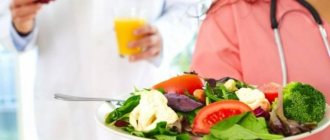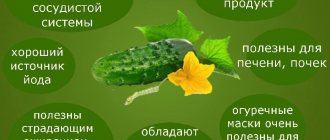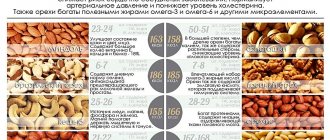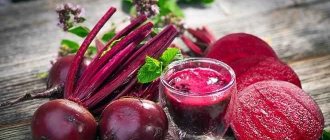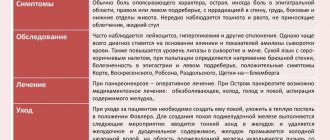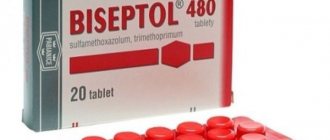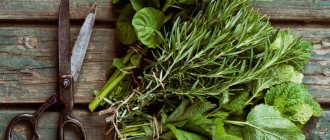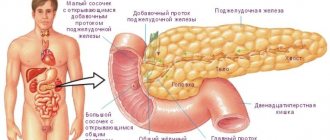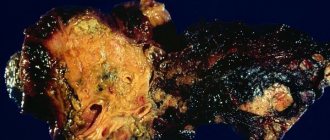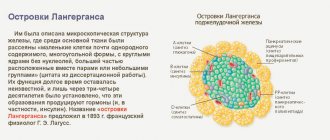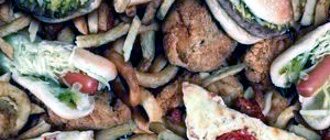Currently, store shelves are bursting with all kinds of products in beautiful, bright wrappers. But if you look at the composition and expiration dates of such products, you become despondent.
It feels like they are selling poisons and toxins that are slowly killing our body. Our food is becoming more harmful day by day. Therefore, gentle nutrition is needed not only for people suffering from chronic gastrointestinal diseases, but also for people who are smart about their health.
Diet for diseases of the liver, pancreas, and gall bladder have become a necessary aid for organizing a balanced diet.
Functioning of the gastrointestinal tract
Water and food keep our body alive. It is from these products that the body draws strength to carry out its functions: protective, metabolic, reproductive. Not a single useful or necessary element for the body will simply appear in it.
And our vital forces depend on what we eat. The gastrointestinal tract is the first to convert food into energy. Among them are two important glands: the liver and the pancreas. Without going into scientific terminology, it is popularly explained as follows:
- the liver secretes digestive juice in the form of bile;
- The pancreas secretes pancreatic juice in the form of a set of enzymes.
Both substances enter the common duct through their channels and participate in the digestion of food.
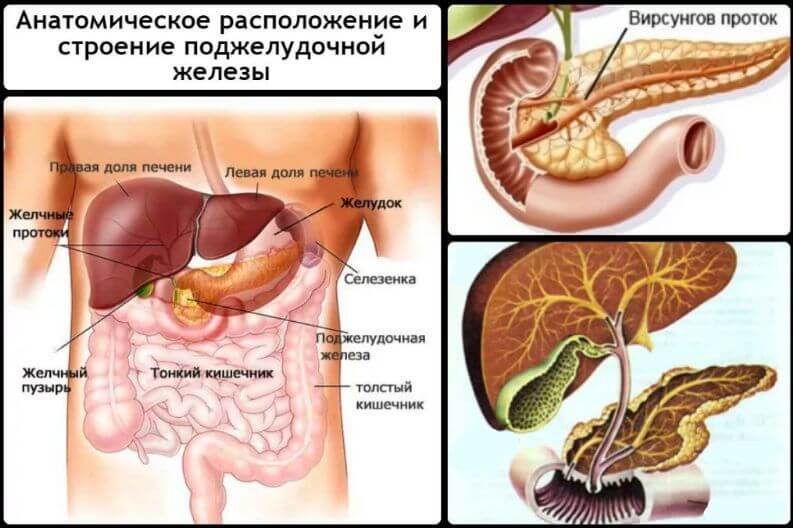
If the organs begin to hurt, then the release of necessary substances is disrupted, and the body begins to fever from the missing elements. The person will immediately notice a deterioration in health. Therefore, due to their importance in the functioning of the body, these 2 organs must be protected in every possible way.
The main essence of diet No. 5:
- Regularity of nutrition is important. Three full meals and 2-3 snacks are recommended. Fasting, as well as overeating, are excluded from the diet;
- you need to eat in small portions, but you should not feel hungry until the next meal;
- the food consumed should not be hot or cold, but warm;
- dishes are prepared in grated or crushed form, so as not to burden the gastrointestinal tract. Avoid eating foods containing coarse fiber;
- dishes are prepared in a double boiler, oven and used boiled or baked, but absolutely not fried;
- chicken eggs are best used when preparing casseroles, soufflés, and as part of other dishes;
- eliminate alcohol consumption, limit coffee and strong tea;
- In the daily nutritional balance, it is necessary to increase the amount of protein foods and reduce the consumption of fats and fast carbohydrates.
Such diet principles help normalize the functioning of organs and contribute to the treatment of diseases. It contains taboo foods that are saturated with uric and oxalic acids, concentrated elements, essential spices, and cholesterol.
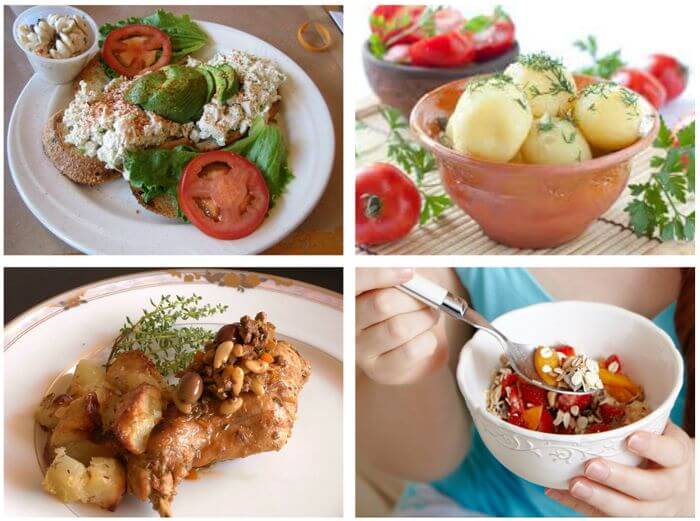
In case of a diseased liver and inflammation of the pancreas, the diet must maintain the required amount of moisture and an abundance of fiber. It increases the consumption of protein foods and light carbohydrates, and the volume of animal fats is significantly reduced. When choosing a daily diet, you need to comply with the caloric intake norm, individually for each patient: 2200-3000 kcal.
Diet cleansing
A diet is prescribed for patients with the following diseases of the digestive system:
- cholecystitis (non-calculous and especially calculous inflammation of the gallbladder);
- pancreatitis;
- hepatitis of various courses;
- gastritis;
- cirrhosis of the liver.
Also, such nutrition will help with pyelonephritis.
These organ diseases appear for various reasons; they can develop due to provocative infections entering the body, eating junk food, self-medication, alcohol abuse, smoking, exposure to a polluted environment, or due to heredity. These diseases are treated with different approaches, but they definitely require strict adherence to the rules that this special therapeutic diet includes.
If the procedure for cleansing the digestive organs is used as a preventive measure, then they switch to a special diet that helps improve the functioning of the liver, pancreas, and biliary organs.
The diet normalizes metabolic processes throughout the body. When using proper nutrition, the recovery process is longer, but if the diet becomes the norm, then there will be no need to use special manipulations with the gastrointestinal tract.
The following food set should be introduced into the daily diet: vegetables, of which the most preferred are pumpkin, beets, and garlic; fruit set, in which sour apples and grapefruits are especially useful; lean meat and fish; whole grain cereals; good grade green tea; a small portion of spices.
Thanks to a well-thought-out and correctly composed menu, the body is spontaneously cleansed and saturated with useful components. You should use high-quality products in your diet, cook your own meals and eat them fresh immediately after cooking. It is important that 30% of your daily diet is protein.
Cleansing cocktails
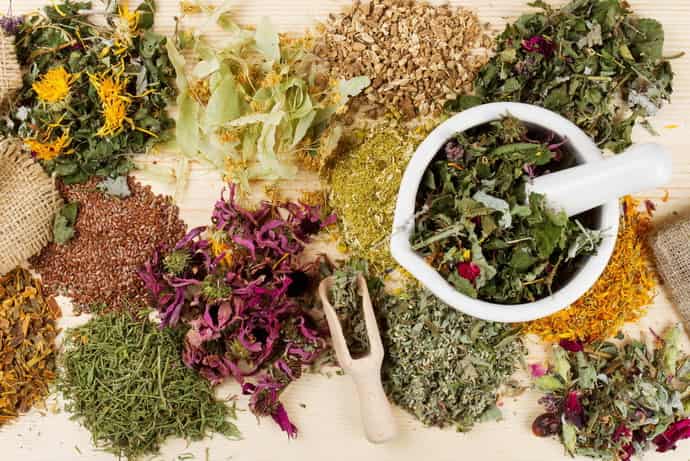
It is useful to replace tea, coffee, and carbonated drinks with medicinal cocktails that have the ability to cleanse the liver and pancreas at home. Vegetable and fruit juices will help rid the body of everything unnecessary. The composition can be thought out independently according to taste, based on the most useful components. Take a healing drink in the morning before breakfast or 2-3 hours before going to bed.
The most useful are fruit cocktails. It contains:
- a couple of green apples, sour in taste;
- 1 medium-sized beetroot;
- 3 small carrots;
- half a lemon without peel;
- a piece of ginger root;
- 2-3 spinach leaves.
Peeled and chopped products are loaded into a blender and crushed until smooth, to which 2-3 glasses of water are added. Drink the cocktail immediately after preparation; it cannot be stored. Regular consumption of the drink eliminates problems in the functioning of the liver and pancreas, removing toxic compounds.
Important! Poor pancreatic function increases the risk of developing diabetes. With liver pathologies, the functioning of the digestive tract is disrupted. It is necessary to comprehensively cleanse the liver and pancreas at home in order to achieve positive results.
First meal
Various types of soups diversify the diet. They can be based on vegetables, cereals, dairy products, and fruits. The base of the soup is boiled, then pureed or crushed and added to the broth in which it was boiled.
This is how we get soups in the form of puree and cream. Season with a spoonful of low-fat sour cream or a small piece of butter. Cream soups are seasoned with skim milk. More detailed soup recipes can be found in cookbooks or on Internet sites.
Basic nutritional principles for maintaining a healthy liver and pancreas
To maintain a healthy body, it is recommended to strictly adhere to the basic principles of a healthy diet.
It is recommended to eat food 4-6 times a day in small portions. This diet helps reduce the load on the organs of the digestive system and improves the process of digesting incoming food.
When eating, remember that the pancreas stops producing digestive enzymes around 18-00. For this reason, everything that a person consumes after 18-00 goes from the stomach to the duodenum and remains there until 9-00. Such a delay in the movement of the food bolus leads to rotting of its contents. With the onset of morning, the rotting mass begins to move through the gastrointestinal tract, and a large amount of toxins is released. Dangerous components are carried through the bloodstream throughout the body. To prevent intoxication, the human liver cleanses the blood.
Most doctors agree that you should not have dinner before bed. You should eat no later than 18-00, and the food taken at dinner should contain no more than 18% of the total daily food intake.
If pathologies occur in the functioning of the glands, you should stop eating fried, salty and spicy foods, and you should also exclude any smoked foods from your diet. If you suspect a disorder of the gastrointestinal tract, it is recommended to pay attention to dishes prepared in a double boiler or in a water bath. In addition, you should not eat too cold or hot food.
Meat and fish dishes
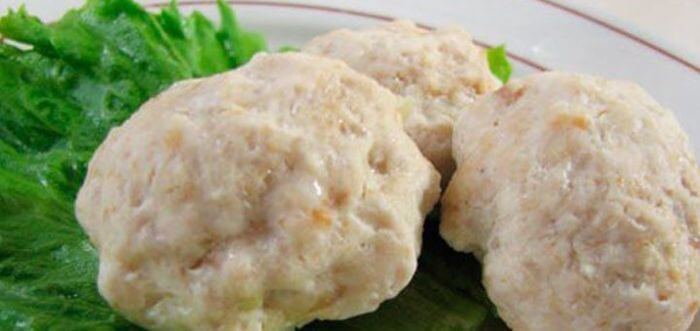
The broth obtained by boiling meat or fish is not included in the diet. Boiled types of meat are used in the form of minced products: cutlets, meatballs, meatballs, meatballs, beef stroganoff. Meat soufflés, puddings, and rolls add variety to the table.
If the patient's condition improves, the doctor will allow you to expand the menu with chicken, turkey, veal or fish baked in foil or parchment. Baked meat has an original taste with fruit puree, for example apple.
Cereal dishes
Generalizing the dietary cereals for a diseased liver and pancreas, the following are acceptable: rice, semolina, buckwheat, oatmeal. They are used to prepare side dishes in the form of porridges with the addition of butter. Their consumption requires complete protein, which comes in the form of meat products, dairy products or protein from eggs.
Some grains are suitable for desserts: semolina in puddings, fruits in rice products. Egg white is added everywhere. The liver loves buckwheat. Lecithin and amino acids, building materials for liver cells, are found in buckwheat. Oatmeal prevents the absorption of harmful substances that the liver is trying to remove.
Dietary recommendations
Food in the diet is divided into two types: approved permitted and prohibited.
| List of recommended and prohibited foods | ||
| Diet products | Allowed | Prohibited |
| Meat and fish | Lean boiled or stewed meats and fish | Fat-rich meats and fish, as well as any fried foods. Fish caviar, as well as salted and smoked fish are no less strictly prohibited. |
| Bread | Rusks, yesterday's bread | Fresh bread, buns, yeast and puff pastry products |
| Dairy and fermented milk products | Low-fat fermented milk products, low-fat smoothies, milk as a dilution for tea, Adyghe cheese | Fatty fermented milk products and milk, cheese with a pronounced taste |
| First meal | Soups without frying, vegetarian borscht, cream soup, cream soup, non-sour cabbage soup | Conventional soups and borscht made with broth are not suitable for dietary nutrition in case of diseases of the liver, gallbladder and pancreas, as well as okroshka and cold beetroot soup |
| Vegetables | Everything except tomatoes, radishes, corn, radishes, onions, turnips, asparagus, eggplant, rhubarb, garlic and mushrooms. | Fresh herbs, in particular sorrel, spinach, green onions, parsley, are also not suitable. |
| Eggs | If you have liver disease, you can only make steamed egg white omelettes from eggs. | Fried, boiled eggs, yolks |
| Cereals | Rice, semolina, buckwheat, most often used for breakfast, as well as pasta | Corn, pearl barley, wheat and barley cereals, peas, beans are prohibited in the dietary menu |
| Dessert | Dry biscuits, biscuits, mousses, marshmallows, marmalade, marshmallows, lazy dumplings, meringues | Fried pancakes, donuts, cakes, puff pastry products, chocolate, halva, ice cream, cream desserts, chocolate candies |
| Berries and fruits | The menu may include bananas, apples, watermelon, prunes, pomegranate, sour strawberries | Kiwi and all citrus fruits, pear, persimmon, melon, grapes, dates, as well as any seeds |
| Beverages | If you have diseases of the liver and pancreas (and other organs involved in digestion), you can drink weak tea, herbal decoctions, compotes, jelly | Coffee, strong tea, cocoa, plain cold water. Without a doubt, alcoholic drinks are prohibited |
Any by-products (dishes from liver, kidneys, hearts) and all kinds of canned food are also prohibited.
Beverages
The body should receive about 2 liters of moisture per day:
- mineral water poured into glass containers;
- weak green, black, herbal tea;
- rosehip infusion;
- fresh fruit, broth, compote, jelly;
- fermented milk products: curdled milk, fermented baked milk, buttermilk, kefir, yogurt, milk.
Sample menu for a week for glandular disease
1st day
Breakfast1st:
- carrot snack with sea buckthorn;
- milk pumpkin porridge with rice.
Breakfast 2nd:
- boiled veal soufflé.
Dinner:
- cauliflower cabbage;
- turkey meat roll;
- carrot puree.
Afternoon snack:
- decoction of dried fruits with biscuits.
Dinner:
- rice pilaf with added vegetables;
- pike perch soufflé.
2nd day
Breakfast1st:
- milk soup with potato dumplings;
- appetizer of boiled chicken breast, potatoes, apples, seasoned with sour cream.
Breakfast 2nd:
- beetroot kugol.
Dinner:
- vegetable broth soup with protein omelet;
- steamed rice;
- veal meat casserole.
Afternoon snack:
- apple and banana pudding.
Dinner:
- Meat "hedgehogs";
- pumpkin baked in foil.
3rd day
Breakfast1st:
- oatmeal milk soup;
- salad with Swiss cheese and fruit.
Breakfast 2nd:
- red fish stew with carrots.
Dinner:
- pumpkin soup with rice;
- boiled turkey pudding;
- crumbly buckwheat.
Afternoon snack:
- cheesecakes with fruits.
Dinner:
- cod with vegetables in a steamer;
- mashed potatoes.
4th day
Breakfast1st:
- milk semolina;
- zucchini soufflé.
Breakfast 2nd:
- pike perch roll.
Dinner:
- slimy oatmeal soup;
- cabbage rolls made from Chinese cabbage, boiled beef and rice in a double boiler.
Afternoon snack:
- curd balls with filling.
Dinner:
- buckwheat;
- chicken breast meatloaf;
- baked apples.
5th day
Breakfast1st:
- soup with zucchini with milk;
- protein omelette with vegetables.
Breakfast 2nd:
- baked apples.
Dinner:
- beetroot soup with sour cream;
- chicken balls;
- homemade noodles.
Afternoon snack:
- cheese dumplings;
- bananas.
Dinner:
- vegetable salad;
- mashed potatoes;
- turkey zrazy.
6th day
Breakfast1st:
- milk pudding;
- zucchini baked in foil.
Breakfast 2nd:
- veal meatballs.
Dinner:
- shrimp soup;
- buckwheat zrazy with cottage cheese.
Afternoon snack:
- dried fruits compote;
- biscuits.
Dinner:
- boiled turkey breast fillet;
- vermicelli;
- prunes.
7th day
Breakfast 1st:
- lazy dumplings made from cottage cheese;
- fruit salad of apples, pears, bananas.
Breakfast 2nd:
- beet salad with olive oil;
- rabbit pudding.
Dinner:
- soup with dumplings;
- meatballs from turkey fillet;
- rice in a steamer.
Afternoon snack:
- baked apples;
- crackers.
Dinner:
- Cod meatballs;
- carrot and potato puree.
When compiling a weekly menu, you can swap the indicated days. You can change the recipes for a particular dish or add your own ingredients from among the permitted products. An increased intake of your favorite food should not come at the expense of basic calorie content and variety.
Described table No. 5, more suitable for remission in diseases. Its duration is up to a year. Although after such a period it is necessary to continue to spare the organs. In more acute or aggravated phases of illnesses, more strict diets are used: table No. 5A - diet for a diseased liver, and table No. 5P for pancreatitis.
To use the above menu, it is necessary to tighten the processing of products in the direction of wiping the components. And, in general, the diet for one day should include: meat products, fish, cereals, vegetables, dairy. A rational menu is compiled from them and, perhaps, you can make it yourself, without the participation of a doctor.
Healthy foods for the pancreas
The pancreas is responsible for metabolism in the body. It synthesizes the hormone insulin, which regulates blood sugar levels. The organ produces special enzymes for digesting food - they break down fats, carbohydrates and proteins.
With pancreatitis, such functions cease to be performed at the proper level. To prevent this, it is necessary to include in your diet foods that contain large quantities of vitamins A, E and group B, and minerals.
Be sure to eat the following foods and dishes:
| Products | Peculiarities |
| Eggs | Chicken egg white is a product that is easily digested and well absorbed. The omelette needs to be steamed. You can also boil eggs, but you will have to discard the yolk, as it contains a lot of lipids |
| Dairy products | Fermented baked milk, yogurt, whey, kefir, and low-fat cottage cheese are good for the pancreas. Fatty and salty cheeses are contraindicated. Salt will retain moisture in the body, and a large amount of fat in the product enhances enzymatic processes |
| Pumpkin | It is supposed to be eaten after preliminary heat treatment. It contains carotene. It has an antioxidant effect. The pulp also envelops the mucous layers and removes inflammatory processes. Pumpkin does not cause flatulence |
| Beet | The vegetable cleanses the blood, removes toxic substances, and stops inflammatory processes. All this happens thanks to nicotinic acid, iron, betaine and flavonoids |
| Lean meat | Turkey, chicken, veal, beef and rabbit are suitable. You will have to cook the meat without adding oil and with a minimum amount of salt and seasonings. It's best to boil it |
| Lean fish | This applies to pike perch, pollock, hake, white-eye, and burbot. To break down the protein from such products, fewer enzymes are required than when eating meat |
You are supposed to eat fruits, dried fruits and berries. Perfect for:
- watermelon;
- peaches;
- apricots;
- sweet apples;
- pears;
- plums;
- cherries;
- gooseberry;
- currant;
- strawberry.
They all must be ripe.
Recipes for delicious and healthy dishes when eating according to diet No. 5
In fact, there are many different dishes and recipes that were invented by nutritionists or people who were faced with the need to limit themselves in nutrition and eat strictly according to diet No. 5. You can easily diversify your menu if you are not afraid to experiment. So, what tasty things can you cook without violating the rules of diet No. 5?
Boiled sea bass
For diseases of the pancreas and liver, smoked and fried foods are strictly contraindicated. In addition, the type of fish should not be fatty. An excellent choice would be lean sea bass.
The fish must be cleaned and rinsed under running water. Then this fish will need to be boiled in salted water. Rice is perfect as a side dish. The finished dish can be decorated with herbs and grated carrots
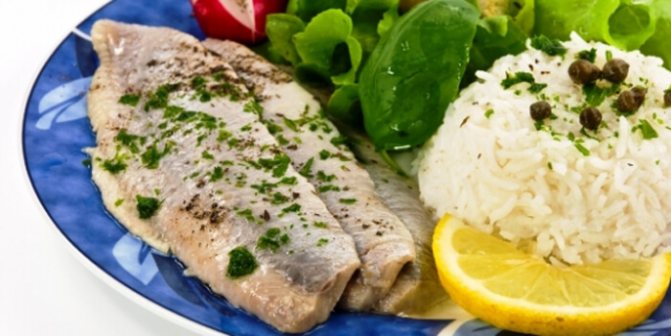
Carrot salad
A very tasty and healthy salad for various diseases of the housing and communal services, and most importantly, easy to prepare. There is no need to describe the recipe much, we will need to grate the carrots on a fine grater, add raisins and 15 grams of honey and a few drops of lemon to it. Salad ready.
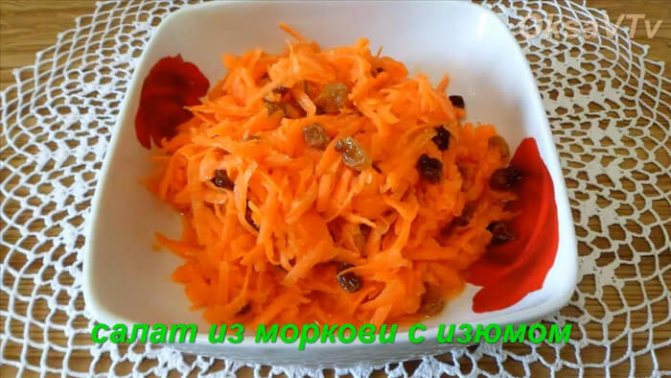
Buckwheat soup with milk
Buckwheat is a very healthy product and is well suited for our diet. To make the soup tastier and digest faster, it must be cooked with milk.
In about 100 ml of boiled water you need to add 50 g of cereal and cook for about 15 minutes. Then pour in 400 ml of milk and throw in a pinch of sugar. Serve with a piece of butter.
Banana cake
Since diet No. 5 prohibits the consumption of baked goods and other sweets. But this does not mean that you have to give up treats. The proposed cake recipe contains all the approved ingredients and is made from recommended products.
So, you will need: 2 packs of gelatin, which need to be diluted in one glass of hot water. After the mixture has cooled slightly, mix it with 500 ml of low-fat yoghurt (no sugar). Be sure to line the baking dish with foil.
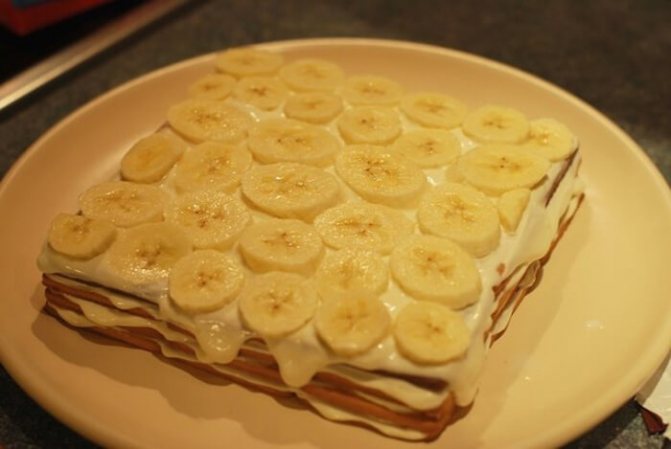
Pour the cake in layers: first lay out the crushed biscuits, then cover it with the gelatin family and lay out a layer of bananas, cover with the gelatin mixture, again a layer of cookies, etc. The top can be decorated with either a layer of bananas or peaches. The cake doesn’t even need to be baked: just place it in the refrigerator.
Diet for chronic forms of diseases and during the recovery period
In this case, a wider range of food products is allowed. According to menu No. 5, it is necessary to limit animal fats and increase the amount of vegetable fats to 30%. It is permissible to consume no more than 10–11 g of table salt in food recipes per day, and the volume of liquid can be reduced to 2 liters. Products that contain nitrogenous substances, a lot of cholesterol, oxalic and citric acid are not recommended to be included in the menu.
Dishes and products allowed for consumption:
- In addition to boiled and steamed dishes, you can also eat baked foods.
- Baked goods made from yeast-free dough, biscuits.
- Dishes made from lean dietary meat and fish.
- Baked omelet from 1 egg.
- Boiled, baked, raw grated vegetables (carrots, pumpkin, tomatoes).
- Any fruit, except those containing significant amounts of organic acids.
